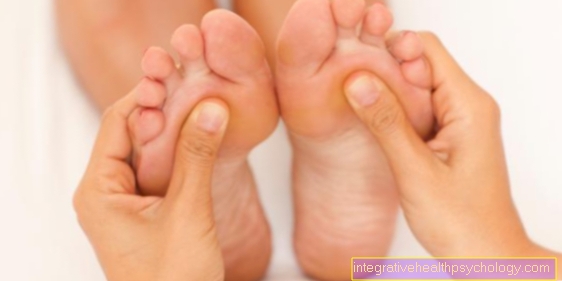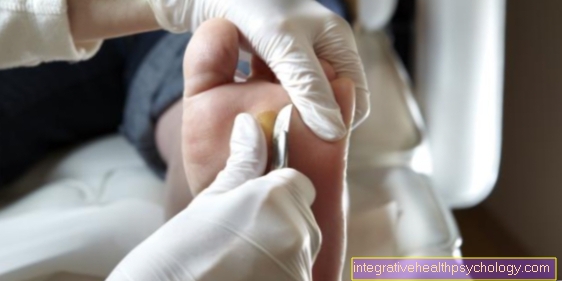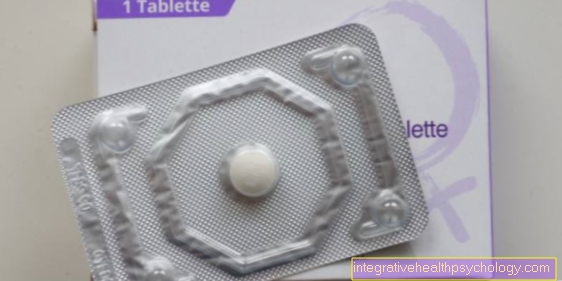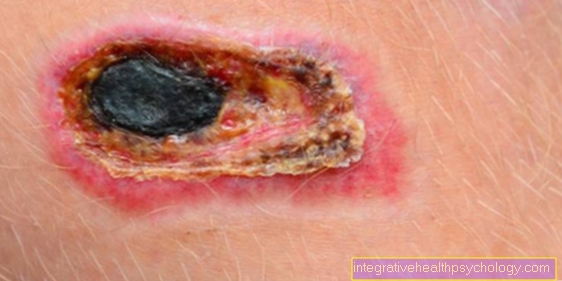Removing tartar
Tartar occurs when the initially soft deposits (Plaque) mineralize through the calcium and phosphate ions found in saliva. Tartar is removed as part of dental tartar removal or by professional teeth cleaning (PZR).
Now what is plaque? If you brush your teeth thoroughly, a very thin layer of protein will form on the surfaces inside the mouth after a short time, especially on the teeth. This first layer can be rinsed off and is called Pellicle.
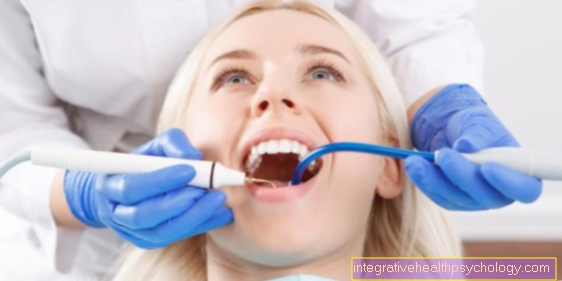
In turn, bacteria from the saliva attach to this layer and bind to the pellicle. This bond can no longer be removed by simply rinsing. The binding of the different bacteria leads to a strongly interlinked network. A toothbrush is required to remove this.
For this reason, tartar occurs primarily where it is more difficult to brush. This means especially between the teeth and on the back molar.
The bacteria within the biofilm multiply and form plaque. The plaque ultimately leads to acid formation and thus demineralization of the tooth, which leads to tooth decay. If the plaque is not removed regularly, calcium and phosphate ions accumulate over time, which leads to the mineralization of the plaque.
In the case of tartar, one can speak of a "petrified plaque".
Tartar has a rough surface, which favors the renewed accumulation of bacteria and thus promotes tooth decay. The problem is that tartar cannot be removed without special instruments and therefore usually has to be removed by the dentist. We strongly advise against removing tartar on your own.
therapy
The treatment of choice for tartar is tartar removal. This can be done in a number of ways. Above all, the removal of tartar and professional tooth cleaning (PZR) should be mentioned here.
The removal of tartar is a health insurance service and has the sole aim of removing all hard deposits. As a rule, tartar removal is carried out with an ultrasonic scaler. This is a metal instrument that is set to vibrate in the ultrasonic range. This makes it possible to remove the tartar.
The aim of the PZR is to remove both hard and soft plaque and to polish and seal the tooth surfaces.
In addition to the ultrasonic scaler, special hand instruments are also used in the PZR to remove tartar. Furthermore, the teeth are cleaned, polished and sealed using various techniques, which should make the development of caries more difficult or prevent it.
You can find out more about this topic here: Professional tooth cleaning
Why should you remove tartar?
Inflammation of the gums and the gums, gingivitis and periodontitis are in the majority of cases caused by bacterial deposits. This so-called plaque mineralizes through the saliva in the oral cavity and sticks to the teeth as tartar and as concretions under the gums.
Tartar deposits are considered a cause of both the development of caries and the development of inflammatory periodontal diseases. Tartar is a term used to describe colonized bacterial colonies that contain various saliva components and metabolic products and are therefore mineralized, i.e. hardened. They adhere firmly to the tooth surface and can only be cleaned using mechanical aids such as a toothbrush or special ultrasound devices. The mineralized plaque cannot be removed with a jet of water alone.
The tartar emits toxins such as enzymes and antigens that act on the gums. The gums react with inflammation, which can recede if the plaque is removed. In this case, the gingivitis can heal without lasting consequences.
However, if the tartar is not removed, the inflammation progresses and periodontitis, an inflammation of the entire tooth support system, develops. It is accompanied by the formation of gingival pockets and bone loss, which causes the teeth to loosen. The tartar deposits can now migrate into the tooth pockets, where they ensure the progression of the inflammation and bone loss. Even with good dental care, periodontitis cannot heal at this stage without targeted periodontal therapy. If periodontitis is not treated, teeth will loosen, bone and teeth will be lost.
If there is increased caries development, it depends on the amount of acid and calcium salts in the saliva formed by the bacteria, whether tartar formation or decalcification of the tooth enamel occurs.
Under the tartar can thus healthy teeth that are free of caries, but whose gums and gums are badly damaged. For these reasons, existing tartar should be removed regularly in order to maintain the health of the soft tissues and a healthy oral flora.
Removing tartar: prophylaxis
To prevent the formation of tartar, only regular and, above all, thorough brushing of your teeth will help. Only if the constantly emerging plaque is removed regularly, it cannot mineralize. For this reason it is recommended to brush your teeth at least twice a day.
Here everyone should develop a personal system in which all teeth and all tooth surfaces are cleaned. The question of whether you should brush with a manual toothbrush or prefer the electric toothbrush is an individual decision and depends on what the individual gets along better with.
Furthermore, it is very important to also clean the interdental spaces thoroughly, as more plaque accumulates here. The classic dental floss or so-called interdental brushes (Intedental brush) on. Here, too, there is no general decision as to what is better, but this decision is individually different.
The interdental brushes are available in different sizes and the choice of size should be discussed with the dentist. In addition, depending on the person and the situation with the teeth, it is recommended to carry out a professional tooth cleaning (PZR) 1 - 4 times a year. For the normal patient, it is usually sufficient to have a PZR done every six months. People with restricted motor skills, such as walking with certain diseases or people with disabilities, with complicated teeth or periodontal disease. Here the tartar is removed and the subsequent polishing makes a new deposit more difficult.
Avoiding tartar is therefore not only desirable for aesthetic reasons, but also of great importance for overall dental health.
More information can be found here: dental care
What is a scaler?
A tartar remover is a special sterilizable instrument made of stainless steel that can be used to scrape off the tartar. It has to be sharpened regularly as it becomes blunt after repeated use and no longer removes tartar without force and pressure.
This device with the pointed end should only be used by qualified personnel, as the risk of injury for inexperienced users is too great.
Furthermore, the place on the back of the front teeth, where the most calculus infestation is, is very difficult to see. The tartar remover can easily slip off and injure the soft tissue or damage the tooth structure if handled too forcefully.
For these reasons, the scaler should only be used in the dental practice by qualified personnel, where it is properly sterilized, sharpened and cared for.
The patient can only use the tartar remover to remove soft food residues after eating in the interdental spaces.
You can get to the main article here: Scaler
What is a tartar eraser?
A tartar eraser is comparable to an eraser, it has a removing effect on the tartar, but can only reduce slight infestation. In general, the tartar eraser is helpful to remove slight discoloration from the teeth. This tool does not give satisfactory results on a solid base.
The tartar eraser is made of rubber to which crystals of silicon carbide have been added to create an abrasive effect.
It is important during the application that it is carried out carefully and without pressure so that the soft tissues are not injured. If the gums bleed after use, they can easily become infected and develop inflammation.
Find out more here: Tartar eraser
How can I remove tartar myself?
Generally, tartar cannot be removed by yourself. In a mineralized, hard state, it is almost impossible for the patient to reduce this deposit independently. The only thing that the patient can do prophylactically on his own is to remove the soft plaque as quickly as possible, provided that it is there, so that tartar does not even form. Tartar can only be removed effectively and gently without damaging the teeth in the dental practice with an ultrasound device or with hand instruments such as scalers (tartar scrapers) and curettes.
If the deposits are still soft and have not yet mineralized to tartar, they can easily be removed with a toothbrush and between the teeth with dental floss or interdental brushes. Electric toothbrushes with an ultrasonic function, which cleans deposits more effectively through high vibrations, offer greater cleaning ability.
The patient does not have any other option to work independently, as there is far too great a risk of damaging the teeth and not removing the tartar thoroughly enough.
What home remedies will help to remove tartar?
Home remedies can also be used to remove tartar.
It is often advisable to “scrub away” the mineralized plaque with baking soda or baking soda using a toothbrush, but this variant is usually not very promising and the coarse-grained salts can damage the tooth structure. Furthermore, there is the risk of injuring the gums with the grains, which can also become inflamed due to the mechanical irritation. We therefore advise against this variant.
Another home remedy to remove tartar is lemon and white vinegar. Both remedies are based on the acid they contain, which the tartar can be placed on the affected area simply by gargling or using an envelope soaked in the liquid to loosen the tartar. However, the problem here is that the acid also attacks the hard tooth substances such as tooth enamel and dentin and can cause lasting damage. Therefore, this variant is not advisable either.
So-called oil pulling, which is becoming more and more popular, is a preventive measure against tartar formation. Long-chain oils such as olive oil or coconut oil are kept in the mouth for a longer period of time and are intended to reduce plaque formation over the long term. This variant of the home remedy is not harmful, which is why it can be used, but it cannot remove any existing tartar.
Sesame seeds can also be used to remove tartar without hesitation. The person concerned should chew on twenty to thirty grains of sesame seeds and this can remove light tartar deposits. The application can be carried out daily, but does not ensure the desired success in the case of severe tartar contamination.
Tartar removal with lemon
There are several articles in the media that report the positive effects of lemons in removing tartar. The citric acid contained in lemons is supposed to dissolve tartar in the oral cavity due to its acidic effect. However, the teeth are also severely attacked and the tooth enamel is damaged, which is why this method is questionable. Strawberries, whose acid is also supposed to dissolve tartar, have a similar mechanism of action. This home remedy becomes dangerous if the citric acid remains on the teeth for too long, which causes erosion, which means that the acid simply dissolves the hard tooth substances.
Tartar removal with baking soda
Baking powder consists of a coarse-grained salt, sodium dihydrogen carbonate, which has a strong abrasive effect when scrubbed with a toothbrush. These abrasions can reduce tartar, but they also erase the tooth enamel and thus destroy the protective coating of the tooth.
A thorough and complete removal of the tartar is not guaranteed by the application and tartar residues can be left unnoticed. This risk is exacerbated by the fact that it is very difficult to reach the areas that tend to build up tartar (the spaces between the teeth).
The critical points are the front of the lower jaw and the first large molar in the upper jaw, since these positions are where the ducts of the large salivary glands are located and the plaque can therefore well mineralize. Without appropriate lighting and instruments such as the dental hand mirror, the affected areas cannot be inspected well enough to completely remove the tartar.
Ultrasound as an aid in removing tartar
The deposits over the gums can be removed manually or with an ultrasound device, which is particularly popular in the dental practice when there is heavy tartar contamination. Both the EMS device and the Cavitron are preferred. The tip of both devices vibrates at a very high frequency, known as ultrasound. At 20 kHz, the device "bursts" the deposits from the teeth without damaging them.
Caution should be exercised in patients with a pacemaker, as the use of ultrasound can impair the functionality of the pacemaker and is therefore contraindicated.
How painful is it to remove tartar?
As a rule, the removal of tartar can be tolerated well as such, even if an ultrasound device is used. Most patients just find it uncomfortable, but the short application makes it bearable. The removal of tartar can lead to bleeding gums and slight irritation of the gums, which is associated with wound pain and which heals very quickly.
The sensitivity is different for each patient, while the treatment is painless for one, it can be unbearable for the other. If the treatment is unbearable for the person affected, the gums can be anesthetized over the entire area. The dentist can invoice this service privately if necessary.
How painful is it after tartar removal?
The gums irritated after the tartar removal regenerate completely in the first two days after the treatment, so that the wound pain is quickly relieved. In the first week after the treatment, the soft tissues may still be very sensitive and bleed more often when cleaning the interdental spaces, for example with dental floss, if it comes into contact with the silk.
However, this sensitivity should completely disappear after a maximum of one week, otherwise the dentist should be visited. This initiates therapy to accelerate the regeneration of the soft tissue and alleviate the symptoms.
How high are the costs?
Tartar removal at the dentist's is covered once a year by the health insurance company and is therefore free of charge for the patient. Most private health insurers also remove tartar once or twice a year.
The removal of the tartar during professional tooth cleaning is offset against the total costs of the PZR, which represent a private service or private part service. In the meantime, a few health insurance companies even take over a professional tooth cleaning every year. For more information, the patient must contact his health insurance company and inquire there.
How long does it take to remove tartar?
A tartar removal by the dentist can vary in duration. Depending on the effort and amount of tartar, the treatment can last from five to twenty minutes, provided that the roughened tooth surfaces are polished afterwards. A professional tooth cleaning, in which a tartar removal is integrated, takes between 45 minutes and an hour, depending on the oral hygiene and the initial situation of the patient.
How often should you have tartar removed?
Depending on the extent of the tartar formation, a one-time removal per year can be sufficient or far too little. It is crucial here whether the patient tends to build up tartar and what the patient's oral hygiene is like.
With normal tartar formation, it is usually sufficient to have tartar removed once a year and to have a professional teeth cleaning six months later so that the tartar is thoroughly removed once every six months. In patients with massive tartar deposits, this frequency may still be too low, so that the dentist orders more frequent professional cleaning of the tartar. However, professional teeth cleaning should not be done more than four times a year in order not to overuse the hard tooth substances.
You can find out more here: Professional teeth cleaning - how often is it necessary?
Do you need an anesthetic to remove tartar?
As a rule, local anesthesia is not necessary for tartar removal, nor is it a health insurance benefit. In isolated cases, for example in the case of particularly massive tartar plaque or very pain-sensitive patients, anesthesia can be used, but the local anesthetic must then be paid for privately. This is around fifteen to twenty euros.
Can you remove tartar during pregnancy?
Tartar can and should be removed during pregnancy because the tissues of the oral cavity are softer, more susceptible to infection and more easily infected during pregnancy. If there is already an inflammation, the tartar should be carefully loosened manually with curettes in order to clean it thoroughly and gently so that the gums can regenerate and are not irritated even more.
Professional teeth cleaning is possible during pregnancy in the second trimester. The removal of the bacterial deposits prevents them from reaching the bloodstream and thus entering the child's circulation.
Read more under: Bleeding gums during pregnancy
Tartar removal as part of a professional tooth cleaning
The first step in professional tooth cleaning, PZR for short, is the mechanical or manual removal of the plaque from each tooth. The tooth surfaces roughened by the treatment with ultrasound or curettes are smoothed and protected by a polish after removal so that they do not become sensitive during the treatment. After the treatment, sealing fluoride preparations are usually applied to prevent irritation and to help the teeth recover. In professional tooth cleaning, only tartar deposits above the gums are cleaned, a thorough removal of the tartar deposits below the gums (concretions) is the task of periodontal treatment.
Here you get to the main article: Professional teeth cleaning process



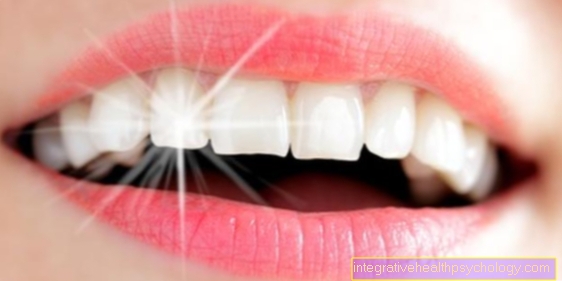

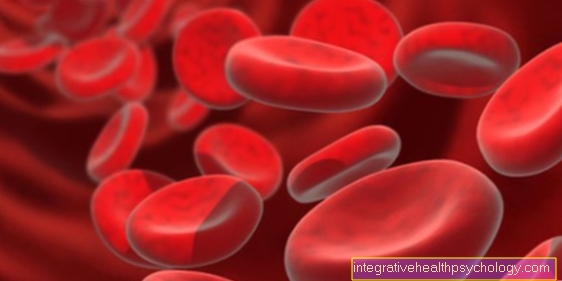
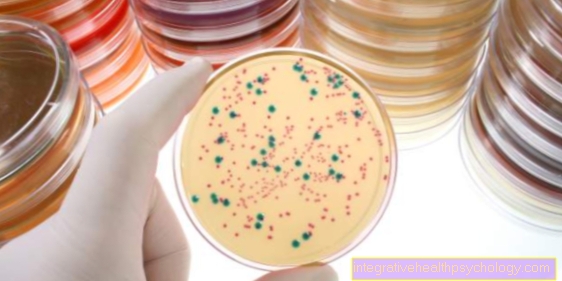


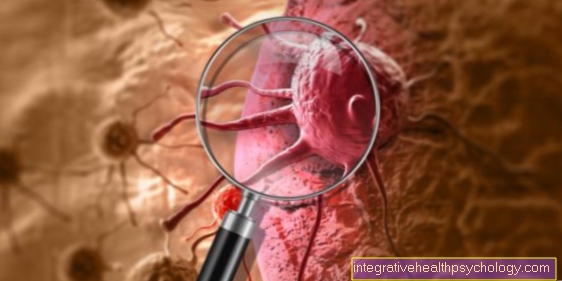



.jpg)
